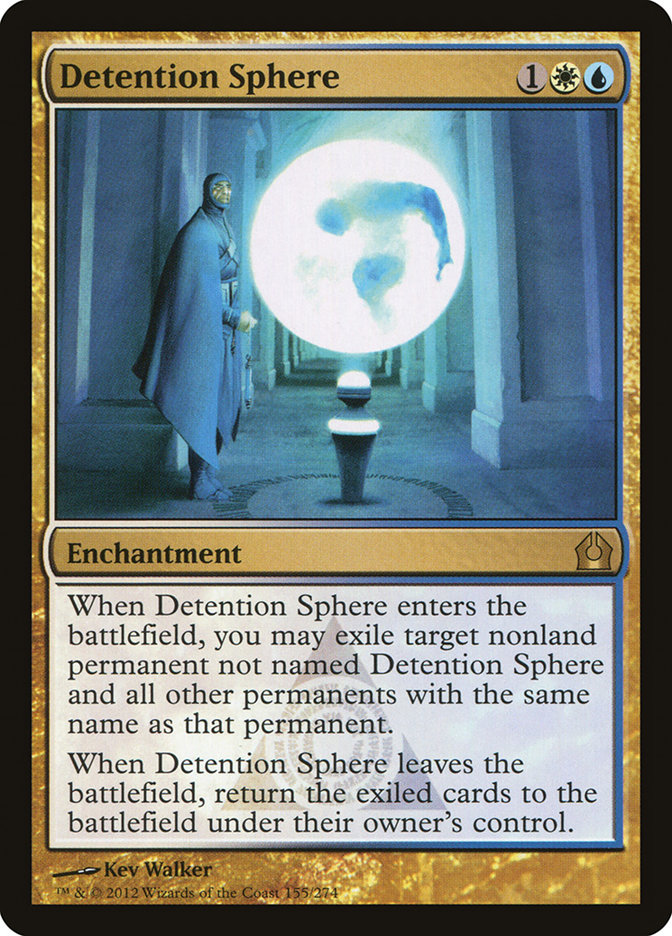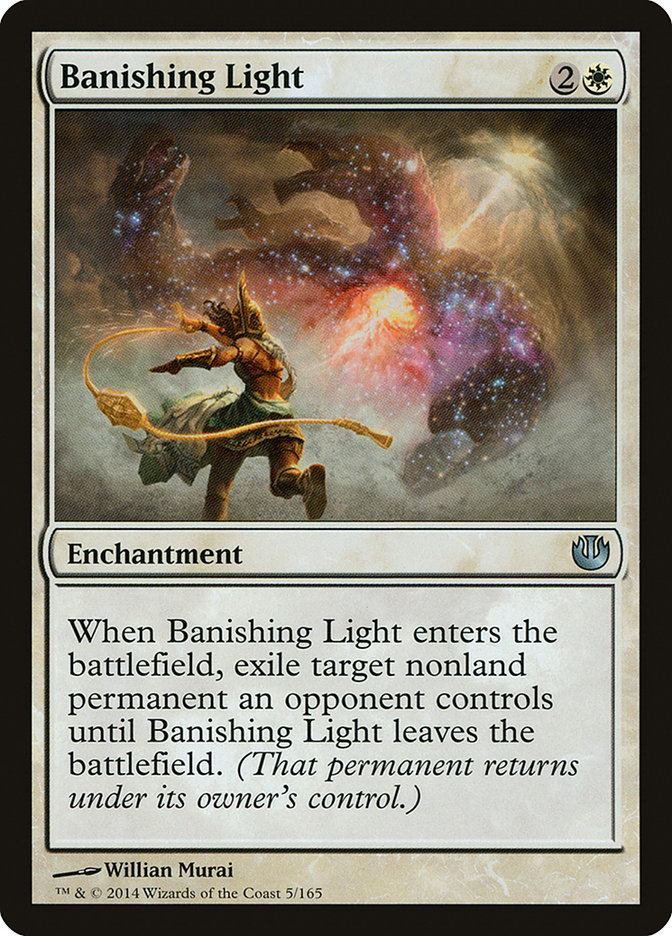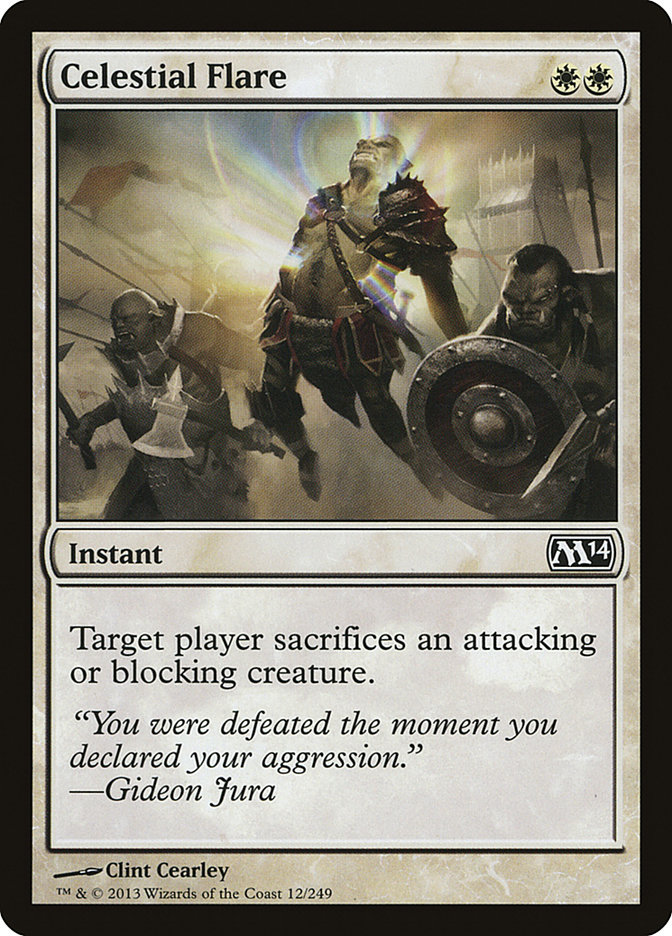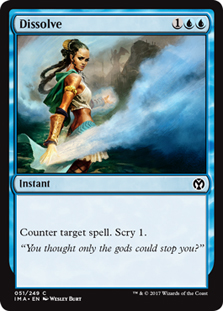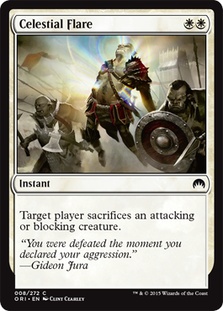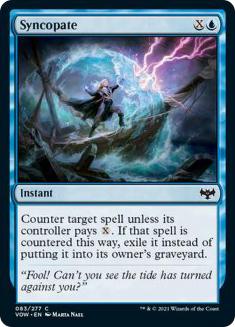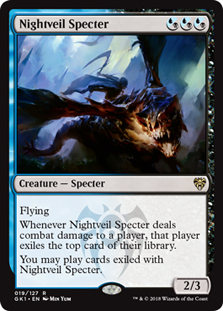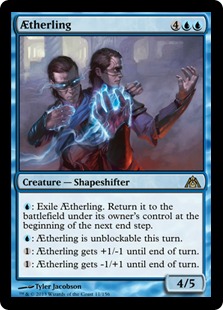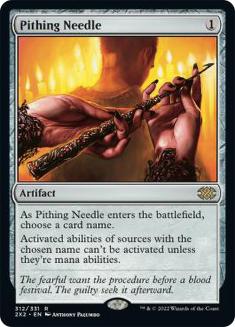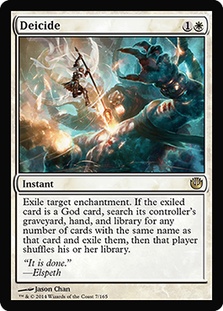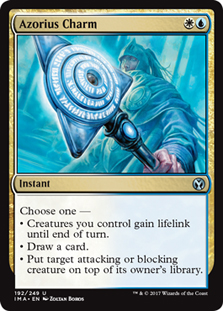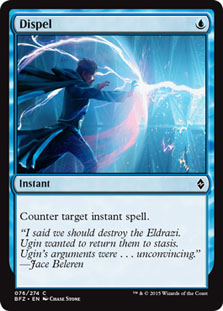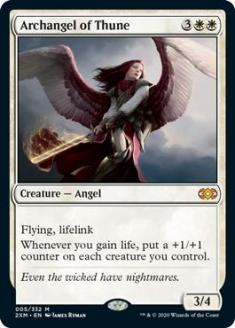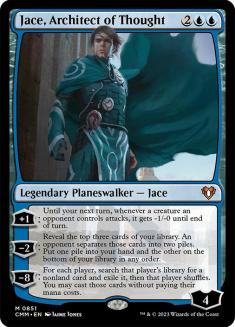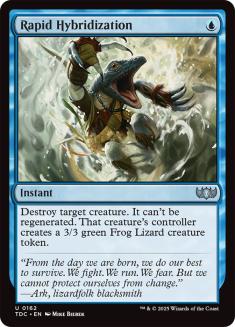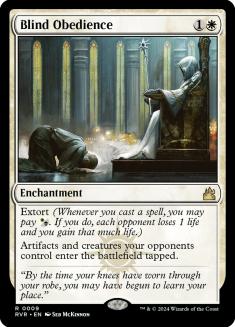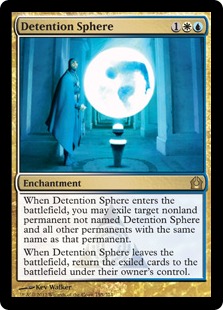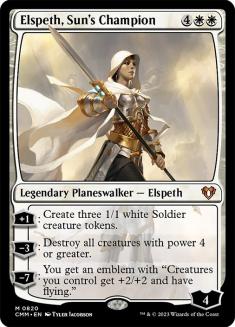It once was said to me by a wise man (Reuben Bresler) that the best writers of our time had no problem just putting their information out there. “It’s
simply the best play you can make!” I recall him declaring, with one thumb tucked into his suspenders while the other waved about in the air. “Tell them
what you are going to do, and then do it!” he cried before stomping away in his socks, no doubt to find his missing shoes.
So without further delay, I present to you my Standard deck for the invitational:
Creatures (1)
Planeswalkers (7)
Lands (27)
Spells (25)
- 2 Syncopate
- 3 Azorius Charm
- 4 Supreme Verdict
- 4 Detention Sphere
- 4 Sphinx's Revelation
- 2 Celestial Flare
- 4 Dissolve
- 2 Banishing Light
Sideboard

A great deal has been said about U/W Control in the past few weeks. However, whether or not Planar Cleansing is included and numbers on cards like Jace,
Architect of Thought and Detention Sphere are altered to reflect that, there are a few fundamentals that remain the same. You play four copies of Sphinx’s
Revelation, Supreme Verdict, and Dissolve. This much is clear. You play some number of Elspeth, Sun’s Champion, and at least one Aetherling goes in the
main deck. 27 lands is the correct number of lands.
All of these are basically facts, so let’s get to the actual main deck decision making and everyone’s favorite: The sideboard guide!
Six oblivion rings?
I remember in the time immediately following Pro Tour Theros when both Black and Blue devotion first arrived on the scene, a question was posed to
Guillaume Wafo-Tapa who had just made top 8 of the PT with Esper Control by Paulo Vitor Damo Da Rosa. The question was “Why did he only play three copies
of Detention Sphere? While testing, we frequently asked ourselves how many copies of Detention Sphere would we play if we could play any number, and the
answer was always five or six.”
Well folks, that time has arrived. With the addition of Banishing Light to the format, control decks now have access to up to eight copies of what is
effectively Oblivion Ring. I have tried versions of the deck with as many as seven Oblivion Ring effects, and I can say after some experiences with too
many competing three mana spells, that the correct number is in fact six.
Don’t get me wrong, I like Planar Cleansing. In fact, the decision to play the card or not has dominated most of my preparation leading up to this
weekend’s Invitational. I understand the need to have outs to situations where midrange decks swarm the board with planeswalkers and creatures, and Planar
Cleansing cleans up that type of mess very nicely. But this is the Invitational we’re talking about here, and I expect a large number of the quality
players in attendance will revert back to the most powerful and consistent archetypes in the format. This will make the landscape look very much like
Dublin, and put three mana removal spells for any permanent right back where they want to be, exiling Thassa, God of the Sea, Underworld Connections, and
anything else that happens to stick to the battlefield.
The two mana removal spell I have chosen for the main deck is Celestial Flare. The only angle of this card that is narrow is when your opponent is swarming
you with something like 2/2 Satyr tokens from Xenagos the Reveler, and you need to suddenly kill a Stormbreath Dragon. Otherwise it is the perfect hedge
for fringe decks like Naya Hexproof while still being effective at stopping an early aggressive rush by being a two mana removal spell. The angle Celestial
Flare presents that puts it above cards like Last Breath is the work that it can do in a simplified board state. As it turns out, when you are spending all
of your mana wiping the board and removing problem cards, a simplified board state is a pretty easy thing to achieve. From there, cards like Celestial
Flare feel as if they represent an effective removal spell for anything at all, including problematic cards like Stormbreath Dragon and Obzedat, Ghost
Council.
Even with cards like Celestial Flare helping to hedge against some more problematic creatures, there are times where the fact that we are missing Last
Breath to deal with opposing Mutavaults can be an issue. For this reason, combined with the appeal of added utility, we are playing the full four
Mutavaults. Azorius Guildgate compliments this decision nicely by helping us with our colored mana sources albeit without the added benefit of scry. There
are many who exclaimed when I told them I was only playing seven temples, Ari Lax told me my deck was bad (which it turned out
wasn’t anything personal as he went on to say that to several thousand Magic players this past Wednesday), and mostly revealed that they didn’t really
understand how to effectively use temples. Scry only when you need something, and be honest with yourself about what you need, and seven temples is plenty.
Instead of going over the sideboard cards one by one, I’m just going to give you my sideboard guide and blurb about the various cards and matchups in the
spots that aren’t clear. Feel free to ask me any questions if and when you have them.
Sideboarding for the Invitational
VS Mono-Black Devotion
Out:
In:
I still firmly believe that the best way to play this matchup is to board out all of your counterspells and bring in cards that make the top of your
library more powerful. It is tons of fun to watch your opponent brick their draw steps in the mid to late game with cards like Thoughtseize and Duress
while you scry and draw into haymakers like Elspeth, Sun’s Champion, Aetherling, and Sphinx’s Revelation. Nightveil Specter is still the nuts and waaay
better than Dissolve on three mana, and the Pithing Needle is a great way to hedge against potential problems like Mutavault and Underworld Connections.
Speaking of Underworld Connections, we don’t care how many Abrupt Decays or Golgari Charms you have. At the end of the day, I will be the last one with an
enchantment on the battlefield. Or I will draw that Deicide, which is a concession to that fact that those cards do exist to destroy my enchantments.
VS Mono-Blue Devotion
Out:
In:
The countermagic in this matchup is a little bit funky. Dissolve isn’t great because many opponents will be bringing in countermagic that is cheaper and
thus will win inside the tempo of a game where they have threats and you need to find answers but your mana is constricted. Syncopate is fine because it’s
an awesome two drop, and Dispel is great because it turns the table a bit on the whole “small mana investment to trump your larger mana investment” thing.
If they are spending one and two mana to answer your attempts to get ahead or recover, than we need to be able to spend only one mana to interact
profitably.
Archangel of Thune and Nightveil Specter are still unreal beatings. Perhaps even more so than ever before because most blue players do not expect us to
have these cards anymore. Ross Merriam told me so.
VS. Jund and G/R Monsters:
Out:
In:
Here is the first matchup where Rapid Hybridization gets to shine. There is nothing in this world quite like an opponent finally “seeing the opening” and
jamming their Stormbreath Dragon into your one open mana.
*whiny little girl voice* “But Harry, what about that mean old wittle 3/3 frog lizard?” ~Andrew Shrout
Quit being such a whiny little girl. No one cares about that frog lizard. If you can’t kill a 3/3 at sorcery speed, then you’re already dead for a myriad
of other reasons. I understand that for some, frogs falling from the sky is a problem of… well… biblical proportions, but not for us. We can kill a
creature. It’s those hasty, 4/4 flying, protection from the half of our deck that removes things creatures that gives us problems. Dragons, not Frog
Lizards. Sheesh.
Pithing Needle and Negate are still very good against planeswalkers and Blind Obedience does great work as well against Stormbreath Dragons, Satyr tokens,
and anyone still playing Mistcutter Hydra.
VS Control Mirrors:
Out:
In:
Now most of these choices are pretty self-explanatory, but there are some that change when you see certain things. The basic concept is to be threat-heavy.
Many control players (mostly the ones not playing Planar Cleansing) are playing black for Thoughtseize, which means that a second Aetherling is necessary.
If they don’t have Planar Cleansing, you can bring in Deicide. If they have Obzedat, Ghost Council or Blood Baron of Vizkopa you can bring in Rapid
Hybridization. If they don’t have any creatures, you can cut all of your Supreme Verdicts and leave some Detention Spheres. If they are playing Planar
Cleansing and not many threats for Detention Sphere you can even bring in Archangel of Thune as just another card that needs to be dealt with. Cards that
can be cut to make room include the Azorius Charms and possibly the remaining Banishing Lights.
VS R/W Burn
Out:
In:
Detention Sphere is the Oblivion Ring effect to shave two copies of here on the off chance that you are constricted on blue mana and need to play multiple
spells in a turn. No one is falling into the Detention Sphere trap anyways. Nightveil Specter is a great blocking body while also letting you put a clock
on your opponent and boosting the lifelink mode of Azorius Charm. If you ever get a chance to start casting some of your opponents spells like Magma Spray
or Warleader’s Helix, you are free to clap your hands and giggle. Supreme Verdict is very dead in this matchup.
VS Aggro Creatures
Out:
In:
There are some changes that can be made depending on what kind of aggressive creatures are being played. If they are red creatures, you are encouraged to
bring in Dispel for their Skullcracks. If they are black creatures, you can bring in the Deicide for all of their enchantment creatures. If they are white
creatures you can… just win the game. But it might be correct to bring in a Dispel for something like Rootborn Defenses.
VS Naya Hexproof
Out:
In:
Dissolves and Aetherlings are just too slow. Nightveil Specter isn’t good because their creatures get arbitrarily large. Archangel of Thune is fine because
it’s not Dissolve or Aetherling. And Dispel and Deicide are completely and totally bonkers.
Also, try real hard not to get Ghor-Clan Rampagered when they have Boros Charm. That doesn’t end well.
Additional Sideboarding Notes:
While it would be a tad long-winded of me to go into detail about all the other potential fringe matchups, there are a few tidbits I have learned over the
last year of playing control decks in standard that I will share with you:
– Rapid Hybridization is gross against all of the worst nightmares for this deck. There was a time where over a two week period I had six total match
losses in something like 25 or 30 total rounds. Every single one was to the card Obzedat, Ghost Council. It got so bad that I allowed myself to continue
splashing black in my deck for Dark Betrayal just to deal. Rapid Hybridization deals with that problem, the Stormbreath Dragon problem, the Blood Baron of
Vizkopa problem (which was never that big of a problem), and sometimes, even Soldier of the Pantheon. It fills all the holes, and can even kill a
Mutavault. Rapid Hybridization deserves a slot, end of story.
– B/G Dredge cannot beat an Archangel of Thune. Deicide is also very good against them.
– I cut the Pithing Needle from my board for a time and was sad that it was gone. It’s still the most efficient way to deal with a resolved Aetherling, and
that alone warrants its inclusion. Factor in the work that it does as a one-of in many mainstream matchups and it is basically an auto-include.
– The second Aetherling may not be correct after this weekend. It depends how many Thoughtseize are in your opponents control decks.
– Nightveil Specter is still a sicko board plan. No, it does not belong in the main deck. The rule goes like this: Dissolve for game 1 and Nightveil
Specter for games 2 and 3. That’s the formula.
– Planar Cleansing may still be correct for large events like Grand Prix or SCG Opens. I just don’t think it is for this particular Invitational. If in the
eleventh hour, I feel like I will see more midrange decks going wide on permanents, I may consider Fated Retribution. But for now, my Oblivion Rings are
just too important.
Good luck to everyone attending the invitational this weekend and lookout for the rise of Team MTG First! The number one competitive team in the
Baltimore/Washington DC area.
We’ve got some hot pink T-Shirts that are really going to turn heads…


